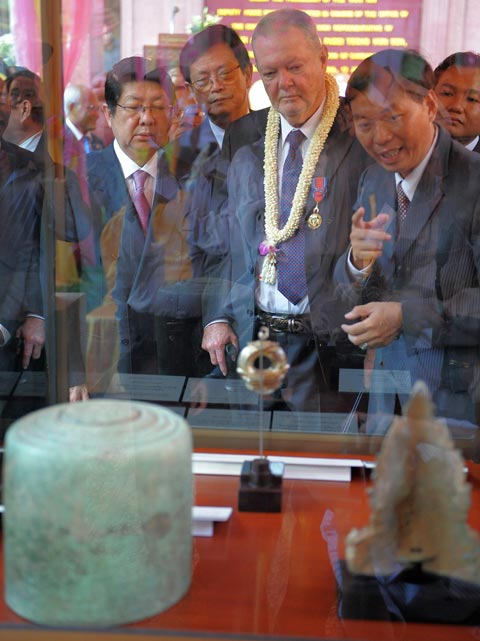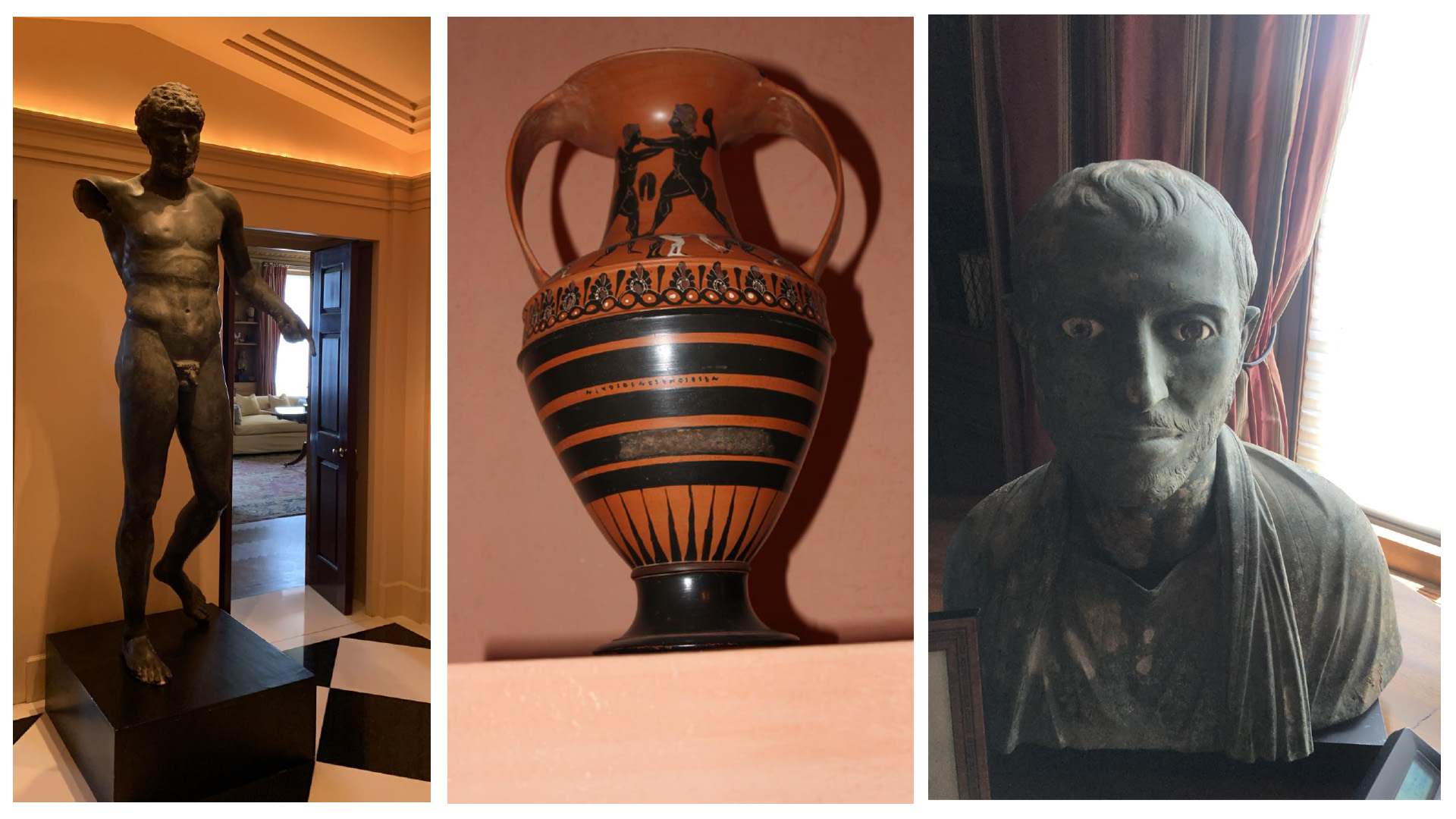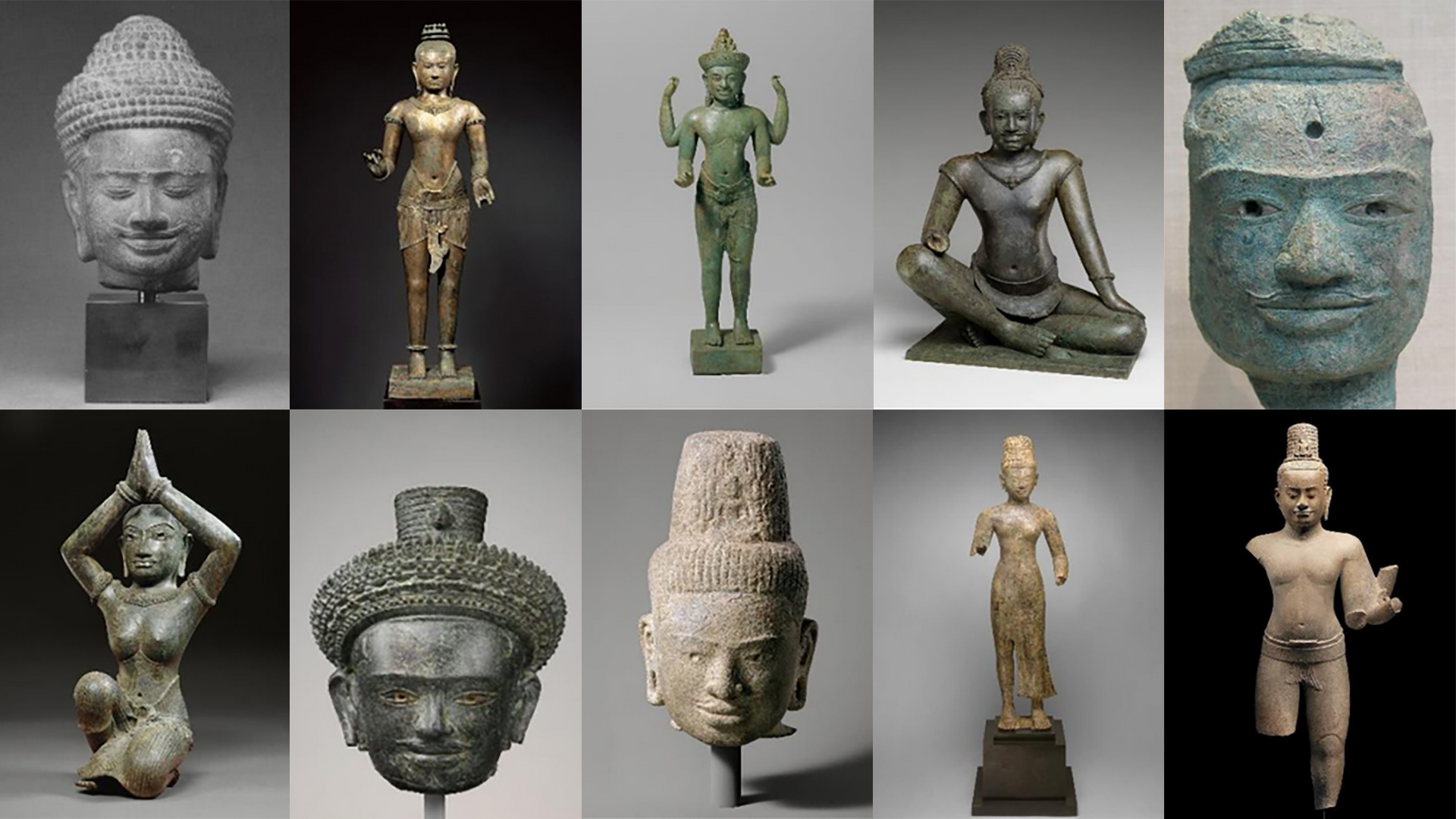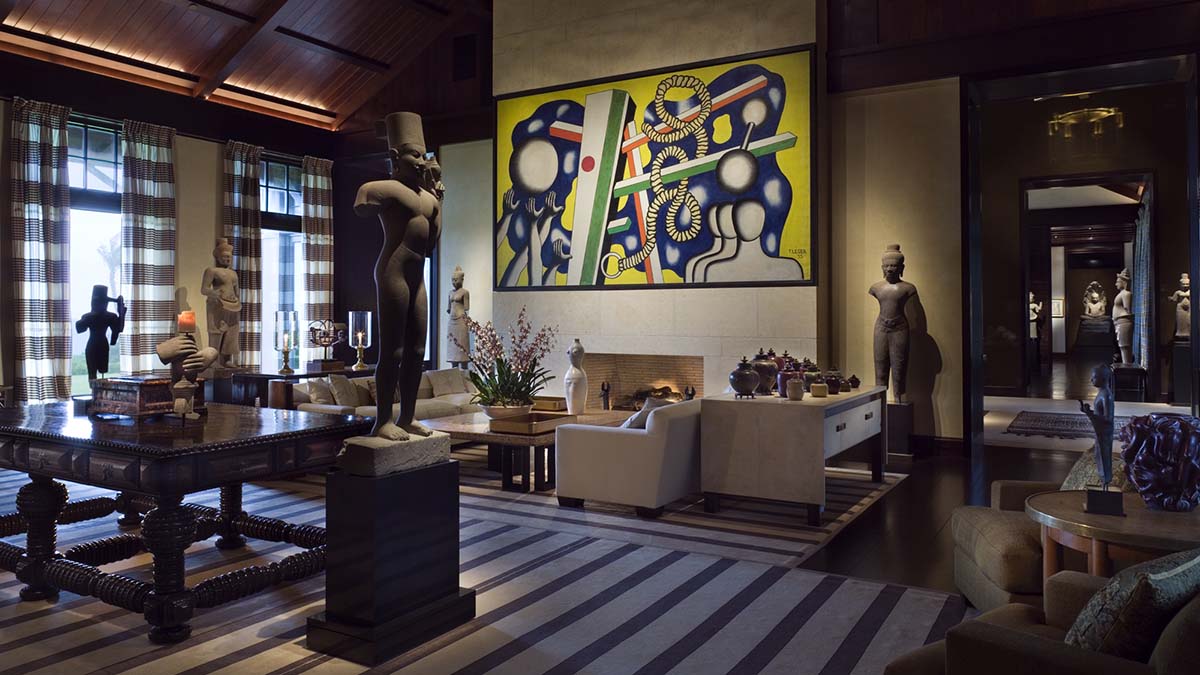ACCOUNTABILITY
Cambodia celebrates return of dozens of Khmer treasures from the Met and other collections
The spate of repatriations followed extensive efforts to trace and recover looted ancient artifacts, including some identified by ICIJ and linked to disgraced art dealer Douglas Latchford.

After a decades-long journey through the hands of art smugglers, dealers and collectors — including billionaires and North America’s largest museum — dozens of ancient Khmer objects have been returned home to Cambodia.
On Thursday, the country’s prime minister led a ceremony to celebrate the repatriation of 70 artifacts that were stolen during years of bloody civil war and later transferred to Western art institutions and private collectors.
In a statement, the Cambodian Ministry of Culture and Fine Arts described the return of the artifacts as akin to the return of “Khmer ancestors’ souls.”
The ceremony marked a milestone in Cambodia’s yearslong effort to trace and recover looted cultural treasures, including many tied to Douglas Latchford, an accused antiquities trafficker linked to hundreds of artifacts taken from sacred sites around Southeast Asia. The recent repatriations were secured through a range of processes including seizures by U.S. law enforcement, voluntary returns, and legal proceedings, according to the Ministry of Culture and Fine Arts. In several cases the artifacts were held by high-profile collectors, such as the Metropolitan Museum of Art and two billionaires: Jim Clark, the founder of Netscape, and late businessman George Lindemann, then his family.
A 2022 investigation by ICIJ, the Washington Post and Finance Uncovered identified a number of missing Khmer objects from Cambodia’s most-wanted list featured in magazine photoshoots of mansions owned by the Lindemann family. A photograph in a 2021 edition of Architectural Digest showed the lush courtyard inside the San Francisco home of Lindemann’s daughter, Sloan Lindemann Barnett, and her husband, Roger Barnett, with several empty pedestals.
ICIJ found that the pedestals were not in fact empty: A set of ancient stone heads had been edited out of the photo. Those stone heads have now returned to Cambodia, according to the Ministry of Culture and Fine Arts.
The Lindemann antiquities collection was previously described as “one of the greatest collections of Southeast Asian art in private hands.” But investigations by ICIJ and its reporting partners showed that some of the 10th to 12th-century statues — which had adorned mansions in Florida and California — were likely stolen from Cambodia and smuggled to the U.S. with the help of Douglas Latchford.

Last year, the Lindemann family signed an agreement with federal prosecutors in New York stating that the family would voluntarily return the pieces and would not face criminal charges.
Among the objects previously held by the Lindemann family and recently returned to Cambodia is a larger-than-life-sized statue of Dhrishtadyumna — a mythic warrior — stolen from a temple in Koh Ker, an ancient city known for its sandstone statues. For years, Dhrishtadyumna’s original pedestal, which the statue had been ripped from decades ago, sat empty at the National Museum of Cambodia. Now the two parts have been reunited as the museum’s staff assess how best to rejoin the two pieces, a Ministry of Culture and Fine Arts official confirmed.
“Every time I visit the artifacts with experts and members of the museum over the last few weeks, there are new revelations, especially as many were kept in mansions in the United States for several decades,” Bradley J. Gordon, a legal advisor to the Cambodian arts ministry told ICIJ. “It is truly an exciting time for anyone interested in the history of Angkor and earlier kingdoms of Cambodia and promises a new era of research on Cambodia’s past.”
Latchford was indicted in 2019 by U.S. federal prosecutors, who accused him of playing a leading role in a massive looting of Cambodia over more than a decade. Latchford died in 2020. Last year, his estate agreed to pay $12 million and return a 7th-century bronze statue in a record forfeiture. In 2022, Clark, the Netscape cofounder, agreed to return 35 relics from his private collection. All had passed through Latchford’s hands.
Clark told ICIJ he had displayed the objects in a Miami Beach penthouse he owned before moving them to a Palm Beach storage unit, where they remained for more than a decade before he turned them over to authorities.
“I kept wanting to bring parts of it out,” Clark said of the collection. “The decorator we’d use for any place we had, he wasn’t excited about it.”
At least 14 of the newly returned pieces to Cambodia were previously held by New York’s Metropolitan Museum of Art, which has had extensive dealings with Latchford and other accused antiquities smugglers. Last year, ICIJ reported that the museum’s catalog contained at least 1,109 pieces previously owned by people who had been either indicted or convicted of antiquities crimes.
Later that year, the Met signed an agreement with US federal prosecutors to return 16 ancient Khmer statues to Cambodia and Thailand that were linked to illicit antiquities trafficking.
Thursday’s ceremony was held in the Peace Palace, the office of Cambodia’s Prime Minister Hun Manet. The statues have since been transferred to their permanent home in the national museum.
“The Cambodian people are proud and filled with joy for the return of these national treasures representing our ancestral souls and identity, under the umbrella of peace and development,” the Ministry of Culture and Fine Art said.


